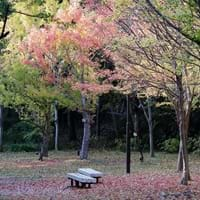Life Span
Biennial and Perennial
Perennial
Origin
Europe, Western Asia
China, Japan, Korea
Types
Not Available
jiujiangense, horizontale
Number of Varieties
Not Available
Habitat
waste ground, wastelands
Cold Regions
USDA Hardiness Zone
4-9
5-9
Sunset Zone
A1, A2, A3, H1, H2, 1a, 1b, 2a, 2b, 3a, 3b, 4, 5, 6, 7, 8, 9, 10, 11, 12, 13, 14, 15, 16, 17, 18, 19, 20, 21, 22, 23, 24
2a, 2b, 3a, 3b, 4, 5, 6, 7, 8, 9, 14, 15, 16, 17, 20, 21
Habit
Rosette/Stemless
Upright/Erect
Flower Color
Yellow
Light Yellow, Yellow green
Flower Color Modifier
Bicolor
Bicolor
Fruit Color
Brown, Black
Red, Green, Yellow green
Leaf Color in Spring
Green
Dark Green
Leaf Color in Summer
Green
Dark Green
Leaf Color in Fall
Green
Yellow, Red, Orange
Leaf Color in Winter
Not Available
Not Available
Leaf Shape
Pinnate
Maple shaped
Plant Season
Summer
Spring, Summer, Fall, Winter
Sunlight
Full Sun
Full Sun, Partial Sun, Partial shade
Type of Soil
Loam
Clay, Loam
The pH of Soil
Neutral
Acidic
Soil Drainage
Well drained
Well drained
Tolerances
Drought
Pollution, Drought, Soil Compaction
Where to Plant?
Ground, Pot
Ground
How to Plant?
Seedlings
Seedlings, Stem Cutting
Plant Maintenance
Medium
Medium
Watering Requirements
Average Water Needs, Do Not over Water, Keep the ground moist but not water-logged
Average Water Needs, Do Not over Water
In Summer
Lots of watering
Lots of watering
In Spring
Moderate
Moderate
In Winter
Average Water
Average Water
Soil Type
Loam
Clay, Loam
Soil Drainage Capacity
Well drained
Well drained
Sun Exposure
Full Sun
Full Sun, Partial Sun, Partial shade
Pruning
Remove damaged leaves, Remove dead branches, Remove dead leaves
Prune every year, Remove damaged leaves, Remove dead branches, Remove dead leaves
Fertilizers
All-Purpose Liquid Fertilizer
All-Purpose Liquid Fertilizer
Pests and Diseases
Aphids, Armyworm, Cutworms, Downy mildew, Pitch canker, Red blotch
Caterpillars
Plant Tolerance
Drought
Drought, Dry soil
Flowers
Showy
Insignificant
Flower Petal Number
Not Available
Single
Fragrant Bark/Stem
Yes
No
Foliage Texture
Fine
Medium
Foliage Sheen
Matte
Glossy
Attracts
Butterflies
Not Available
Allergy
Stomach burn
allergic reaction
Aesthetic Uses
Not Available
Beautification, Bonsai, Showy Purposes
Beauty Benefits
Blood purifying, Good for skin
Not Available
Environmental Uses
Air purification
Air purification
Medicinal Uses
Aphrodisiac
Not Available
Part of Plant Used
Root
Not Available
Other Uses
Food for animals, Used as a nutritious food item
Showy Purposes
Used As Indoor Plant
Yes
Yes
Used As Outdoor Plant
Yes
Yes
Garden Design
Edible, Herb, Vegetable
Container, Feature Plant, Screening / Wind Break, Shade Trees, Street Trees, Topiary / Bonsai / Espalier
Botanical Name
PASTINACA sativa
ACER buergerianum
Common Name
Parsnip
Trident Maple
In Hindi
चुकंदर
ट्राइडेंट मेपल
In German
Pastinake
Trident-Ahorn
In French
Panais
Trident Maple
In Spanish
Chirivía
arce de Trident
In Greek
Είδος δαυκίου
Trident Maple
In Portuguese
cherivia
bordo Trident
In Polish
Pasternak
Trident klon
In Latin
parsnip
Trident Maple
Phylum
Magnoliophyta
Magnoliophyta
Class
Magnoliopsida
Magnoliopsida
Family
Apiaceae
Aceraceae
Clade
Angiosperms, Asterids, Eudicots
Angiosperms, Eudicots, Rosids
Tribe
Not Available
Not Available
Subfamily
Not Available
Hippocastanoideae
Number of Species
Not Available
Not Available
Season and Care of Parsnip and Trident Maple
Season and care of Parsnip and Trident Maple is important to know. While considering everything about Parsnip and Trident Maple Care, growing season is an essential factor. Parsnip season is Summer and Trident Maple season is Summer. The type of soil for Parsnip is Loam and for Trident Maple is Clay, Loam while the PH of soil for Parsnip is Neutral and for Trident Maple is Acidic.
Parsnip and Trident Maple Physical Information
Parsnip and Trident Maple physical information is very important for comparison. Parsnip height is 15.20 cm and width 7.60 cm whereas Trident Maple height is 610.00 cm and width 610.00 cm. The color specification of Parsnip and Trident Maple are as follows:
Parsnip flower color: Yellow
Parsnip leaf color: Green
Trident Maple flower color: Light Yellow and Yellow green
- Trident Maple leaf color: Dark Green
Care of Parsnip and Trident Maple
Care of Parsnip and Trident Maple include pruning, fertilizers, watering etc. Parsnip pruning is done Remove damaged leaves, Remove dead branches and Remove dead leaves and Trident Maple pruning is done Prune every year, Remove damaged leaves, Remove dead branches and Remove dead leaves. In summer Parsnip needs Lots of watering and in winter, it needs Average Water. Whereas, in summer Trident Maple needs Lots of watering and in winter, it needs Average Water.





